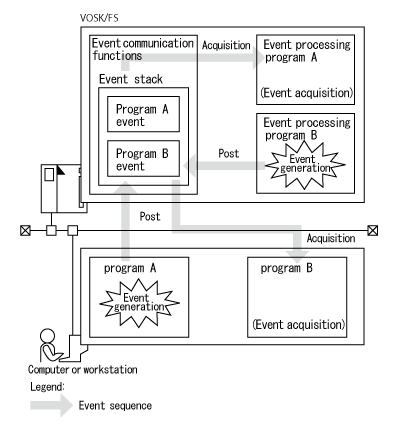VOS1/FS was developed as an upgraded operating system over VOS1/ES2. While continuing to offer the convenience and quickness of VOS1/ES2 and supporting MP5600 / MP5400 and other machines, VOS1/FS featured extended functionality so it could be applied to a broader range of applications and services. Figure 1 outlines the objectives of VOS1/FS.

- Home >
- Historical Computers in Japan >
- Mainframe OS >
- VOS1/FS, VOSK/FS
【Hitachi】 VOS1/FS, VOSK/FS
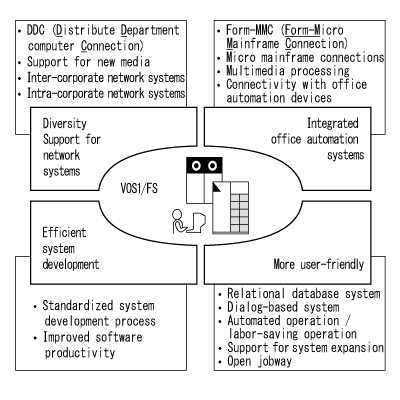
Hitachi announced VOS1/FS in September 1995 and began shipping it in December 1995.
The following are descriptions of some of the VOS1/FS system features.
- 1.Relational database parallel processing
- When the optional relational database (RDB) parallel unit was installed on a MP5400, MP5600, or other M-series parallel server, RDB processing was run in parallel with the instruction processor with any modifications to applications or data assets. This reduced loading on the instruction processor and increased the total throughput of RDB accesses. Figure 2 illustrates the processing sequence with the RDB parallel unit.
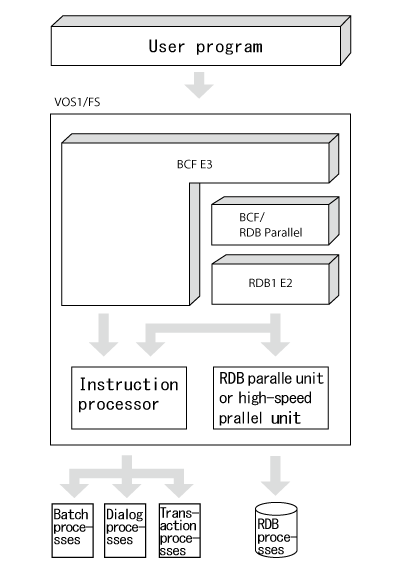
- 2.Micro mainframe connections
- VOS1/FS provided a function that connected micro mainframes (Form-MMC). This allowed computers to extract just the needed portions of mainframe core databases and to change record formats, graph data, add data, and perform other tasks. Figure 3 illustrates how record distribution could change by using Form-MMC.

- 3.Automated labor-saving system operation and management
- The combination of software and hardware that automated system operations from power on to power off and reduced management and maintenance labor ultimately improved the system’s cost effectiveness because they eliminated or minimized complex console operations, scheduling work, and overtime work. Figure 4 illustrates how automated system operations worked.
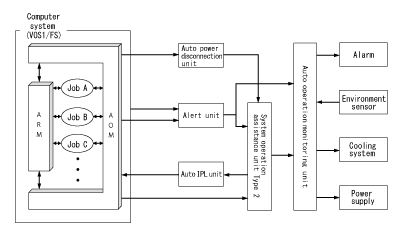
- 4.Open jobway
- VOS1/FS supplied functions for sending and receiving events between personal computers and workstation and the host. It also supplied job communication functions that used the event functions. By creating a user program that used the event functions, it was possible to communicate between VOS1/FS, VOSK/FS, personal computers, and workstations.
- With the job communication function, users using a GUI application on a personal computer could run VOS1/FS jobs, define job nets, and run job nets. Figure 5 illustrates how open jobway worked.
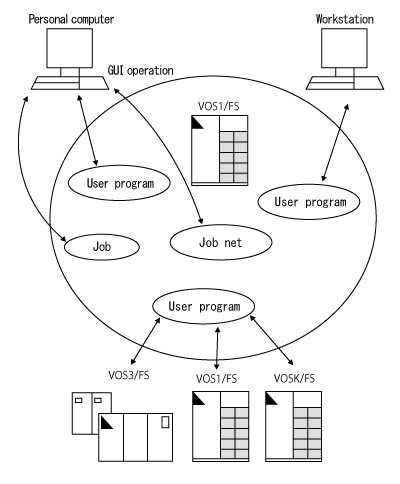
■VOSK/FS
VOSK/FS, which replaced the department computer operating system VOSK, was developed as a mid-range total management server with the features of a database server, a computing server, and a management server. Figure 6 outlines the features of the VOSK/FS operating system.
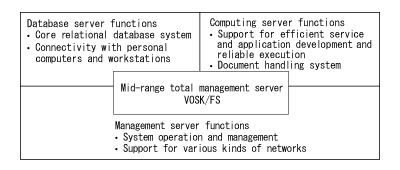
Hitachi announced VOSK/FS in September 1995 and began shipping it in December 1995.
The following are descriptions of some of the VOSK/FS system features as a mid-range total management server.
- 1.Relational database parallel processing
- The MP5400 had an optional relational database (RDB) parallel unit that processed RDBs in parallel with the instruction processor. VOSK/FS automatically directed RDB processing requests from a processing program to a dedicated processor (the RDB parallel unit) so that RDB processes could be run in parallel with batch processes or transaction processes. This increased the total throughput of core applications.

- 2.Open jobway support
- Open jobway was a method by which computers could operate VOSK/FS. It included file operation and definition functions, job net definition functions, an event communication functions.
- (1) File operation and definition functions
- Users using a GUI application on a personal computer could define and manipulate files on the host. File operations included displaying, deleting, duplicating, and renaming files or notes. File definitions included defining physical files (RDB organization and sequential organization), defining logical files, and displaying definition information. Figure 8 illustrates the file operation and definition functions.
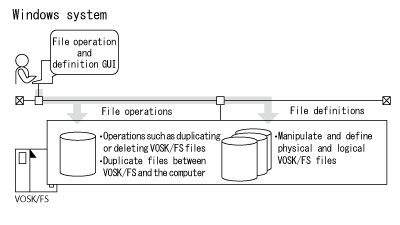
- (2) Job net definition functions
- Users using a personal computer could define and save job nets on the VOSK/FS host. Users could store a job net defined with a personal computer on VOSK/FS and run the job net as an auto job sequencing function on VOSK/FS. Figure 9 illustrates the job net definition functions.
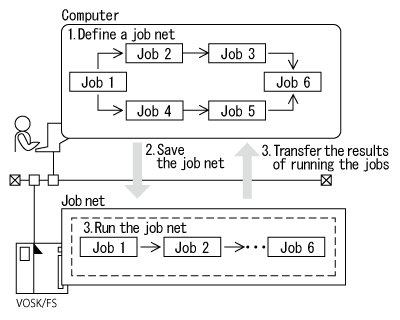
- The user uses a GUI editor on the computer to define the job net. This includes arranging the jobs on the editor and defining the execution sequence with arrows between the jobs. The user could also define when to start the job net execution and display the execution results.
- (3) Event communication functions
- VOSK/FS provided COBOL subroutines that managed the sending and receiving event messages between VOSK/FS and other systems. Event communications could be established by calling these COBOL subroutines from user-created programs. Figure 10 illustrates the basic operation of these functions.
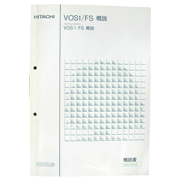 | 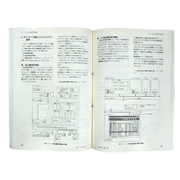 | 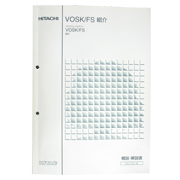 |
| Cover of the Hitachi VOS1/FS manual | Page from the Hitachi VOS1/FS manual | Cover of the Hitachi VOSK/FS manual |
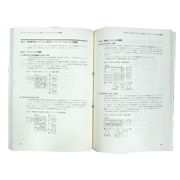 | ||
| Page from the Hitachi VOSK/FS manual |
All Rights Reserved, Copyright (C) Information Processing Society of Japan

